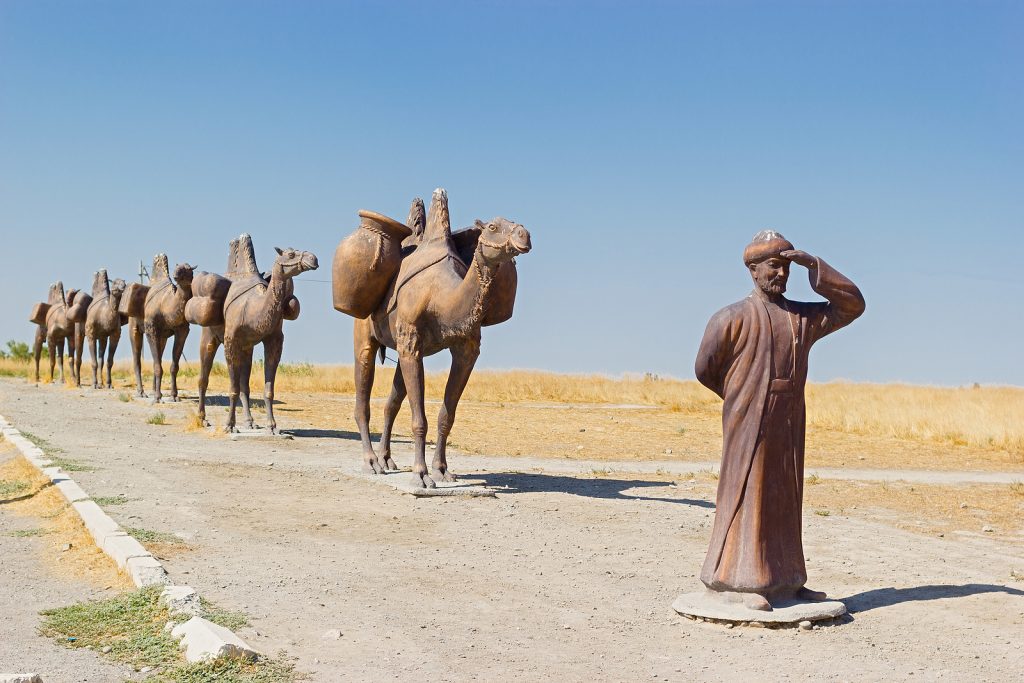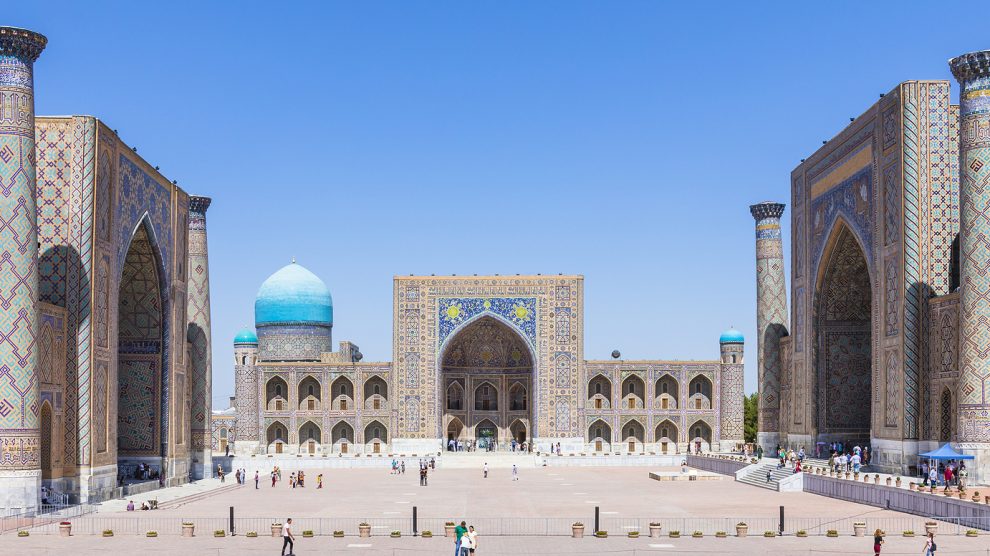Throughout history, the Silk Road has been a symbol of prosperity, cultural exchange, and technological advancement. It has left an indelible mark on the world, and its legacy continues to influence trade and commerce today.
These five books, the latest in our Five Essential Reads series, touch on different aspects of the Silk Road’s long history, its significance in shaping global commerce, and the enduring legacy it leaves behind. They also offer insight into the modern-day revival of the Silk Road, not least China’s ambitious Belt and Road initiative, as well as the challenges and opportunities that come with its resurgence.
The first is Valerie Hansen’s The Silk Road: A New History, which provides a sweeping overview of this ancient network of trade routes. Hansen brings the Silk Road to life through vivid storytelling, sharing tales of merchants, missionaries, nomads and more who traveled its paths. She explores how goods like silk, spices, paper and ideas spread from China to the Mediterranean. Readers feel transported alongside caravans traversing stunning yet perilous terrain. We learn how interactions between East and West shaped politics, economics and culture for centuries. Hansen grounds abstract concepts like globalisation in the lived experiences of real people who risked all on the Silk Road’s roads. Rich historical detail and lively prose transport readers across Asia to experience this era of exchange.
In Silk Roads: A New History of the World, historian Peter Frankopan provides a groundbreaking reimagining of world history centered on the Silk Roads. He argues this network of trade routes unified Eurasia and had an even greater global impact than previously understood. Frankopan weaves a captivating narrative spanning two millennia and connecting East and West, offering fresh perspectives on influential civilisations and how they influenced one another. He brings to life lesser-known powers that shaped commerce and diplomacy. Frankopan makes the abstract intensely human by spotlighting adventurers, missionaries and merchants whose footsteps linked disparate peoples. Lavishly researched and accessibly written, this book expands our view of history through a Silk Roads lens.
Foreign Devils on the Silk Road by Peter Hopkirk meanwhile is an exciting expedition into the remote regions of Central Asia. Hopkirk recounts his journey retracing the steps of early Western explorers who risked everything to map the mysterious lands along the Silk Road. He vividly portrays the harsh yet stunningly beautiful terrain his group encounters while trekking through mountains and deserts. We experience the challenges of travel in an area still untouched by modern development. The author shares fascinating insights into the diverse cultures and peoples the explorers encountered. He explores how their discoveries expanded European knowledge of geography, languages, customs and more. With some style, Hopkirk brings to life dramatic tales of the hardships and dangers faced by these intrepid pioneers.

In Empires of the Silk Road, Christopher Beckwith presents a comprehensive and captivating account of the history of Central Eurasia, spanning from the Bronze Age to the present day. Beckwith delves into the intricate tapestry of empires, cultures, and trade routes that crisscrossed this vast region. Drawing on extensive research and scholarship, he explores the rise and fall of various empires, including the Huns, Turks, Mongols, and others, who left an indelible mark on the Silk Road. What sets the book apart, perhaps, is Beckwith’s ability to connect the past with the present. He highlights the enduring legacies of Central Eurasia’s empires and their impact on contemporary geopolitics. By tracing the historical trajectory of this region, Beckwith sheds light on the forces that continue to shape its destiny.
Finally, Sovietistan by Norwegian anthropologist Erika Fatland takes an immersive and eye-opening journey through the five Central Asian countries that were once occupied by the Soviet Union. With a keen eye for detail and a deep curiosity about the region, Fatland explores the complexities of these nations, delving into their history, culture, and the challenges they face in the post-Soviet era. Through her vivid storytelling and many personal encounters, Fatland paints a nuanced picture of each country, capturing the unique characteristics and idiosyncrasies that make them distinct. From the grandiose monuments of Turkmenistan to the rugged landscapes of Kyrgyzstan, she brings the region to life, offering readers a glimpse into the everyday lives of the people she meets along the way.
Unlike many news and information platforms, Emerging Europe is free to read, and always will be. There is no paywall here. We are independent, not affiliated with nor representing any political party or business organisation. We want the very best for emerging Europe, nothing more, nothing less. Your support will help us continue to spread the word about this amazing region.
You can contribute here. Thank you.







Add Comment